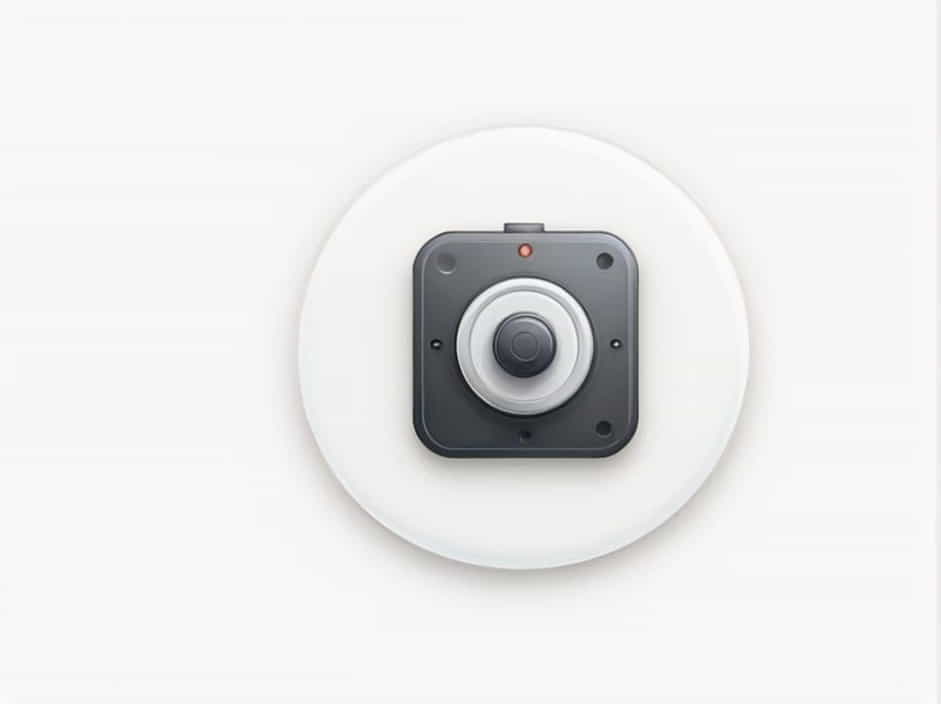Electromagnets are widely used in modern technology, from industrial machines to everyday household devices. These electromagnetic components play a crucial role in converting electrical energy into mechanical motion or magnetic force. One common domestic device that relies on an electromagnet is the doorbell.
In this topic, we will explore how an electromagnet is used in a doorbell, its working principle, and other household devices that also incorporate electromagnets.
Understanding Electromagnets
An electromagnet is a type of magnet that only generates a magnetic field when an electric current flows through it. Unlike permanent magnets, an electromagnet can be turned on or off by controlling the electricity.
The basic components of an electromagnet include:
-
A coil of wire (solenoid)
-
An iron core (to enhance the magnetic field)
-
A power source (battery or electric supply)
When electricity flows through the wire coil, it creates a magnetic field. This temporary magnetism is the principle behind many devices, including doorbells, electric motors, and speakers.
How a Doorbell Uses an Electromagnet
1. Basic Mechanism of a Doorbell
A traditional electric doorbell operates using an electromagnetic mechanism to produce sound. When a person presses the doorbell button, it completes an electrical circuit, allowing current to flow through an electromagnet inside the doorbell system.
2. Step-by-Step Working of an Electromagnetic Doorbell
-
Pressing the Button
- When someone presses the doorbell, it closes the electrical circuit, allowing electricity to flow into the electromagnet.
-
Activation of the Electromagnet
- The electromagnet generates a magnetic field, which attracts a small iron hammer (or striker).
-
Sound Production
-
The striker hits a metal chime or bell, producing a ringing sound.
-
Once the button is released, the circuit breaks, and the electromagnet loses its magnetism.
-
The striker returns to its original position, ready for the next use.
-
3. Advantages of Electromagnets in Doorbells
-
Durability – Electromagnets do not wear out like mechanical bells.
-
Efficient Sound Production – They can generate a loud, clear ringing sound.
-
Energy Efficient – They only consume electricity when activated.
Other Household Devices That Use Electromagnets
Besides doorbells, many common domestic appliances incorporate electromagnetic technology.
1. Electric Fans
Electric fans use an electromagnetic motor to rotate the blades. Inside the fan, an electromagnet induces motion in the rotor, allowing the fan to operate efficiently.
2. Microwaves
Microwave ovens generate electromagnetic waves using a device called a magnetron, which directs energy into food, heating it quickly.
3. Washing Machines
Modern washing machines use electromagnets in their drum motor and water valves, helping control the washing cycles.
4. Loudspeakers
Speakers use electromagnets to convert electrical signals into sound waves. The magnetic field interacts with a diaphragm, creating vibrations that produce sound.
5. Refrigerators
Refrigerator doors often have electromagnetic seals that help keep them tightly closed. Some high-tech refrigerators also use electromagnetic cooling technology.
6. Electric Door Locks
Many homes have electromagnetic locks in security systems, which work by using magnetic force to hold doors shut until they are unlocked with an access card or code.
Comparison of Electromagnets and Permanent Magnets in Domestic Devices
| Feature | Electromagnets | Permanent Magnets |
|---|---|---|
| Magnetism Control | Can be turned on/off | Always magnetic |
| Strength | Adjustable based on current | Fixed strength |
| Uses | Motors, doorbells, locks | Fridge magnets, compass |
| Energy Requirement | Requires electricity | No electricity needed |
Why Are Electromagnets Preferred in Domestic Devices?
1. Controllable Magnetism
Electromagnets can be switched on or off, making them more versatile than permanent magnets.
2. Adjustable Strength
The strength of an electromagnet can be controlled by changing the electric current. This is useful for devices like electric motors and doorbells.
3. Efficient Energy Use
Electromagnets only consume power when needed, making them energy-efficient for daily applications.
Future Innovations: Electromagnets in Smart Homes
With advancements in home automation, electromagnets are playing a bigger role in smart home technology.
1. Smart Doorbells with Electromagnetic Sensors
Modern smart doorbells now use electromagnetic sensors combined with cameras to enhance security and real-time notifications.
2. Electromagnetic Wireless Charging
Wireless chargers use electromagnetic induction to transfer energy between a charging pad and devices like smartphones and electric toothbrushes.
3. Electromagnetic Induction Stoves
Induction cooktops use electromagnetic fields to directly heat cookware, making cooking faster and more efficient.
Electromagnets are essential in everyday household devices, with the doorbell being a prime example. Their ability to generate temporary magnetic fields makes them ideal for various appliances, security systems, and smart home innovations.
As technology advances, electromagnets will continue to be integrated into more domestic devices, improving efficiency, safety, and convenience.
